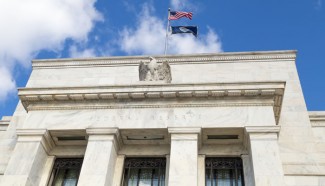
h6 {
background-color:#CCCC99;
padding:10px;
margin-bottom:12px;
margin-top:23px;
font-size:120%;
}
View the complete Fed FOMC meeting statement from April 29, 2015
Fed comments are HIGHLIGHTED. Catherine Austin Fitts’ translation follows:
“Information received since the Federal Open Market Committee met in March suggests that economic growth slowed during the winter months, in part reflecting transitory factors.”
Minus inventory build-up, the US economy is deflating. Per the Congressional Joint Committee, if the “recovery” had matched the historical average, GDP would be 10% greater.
“The pace of job gains moderated, and the unemployment rate remained steady.”
Employment is not rising as we expected.
“A range of labor market indicators suggests that under-utilization of labor resources was little changed.”
Many people can’t find jobs and cannot generate the income they need. Economies do not grow when people have no money.
“Growth in household spending declined; households’ real incomes rose strongly, partly reflecting earlier declines in energy prices, and consumer sentiment remains high.”
Despite relief from lower energy prices, people are not spending.
“Business fixed investment softened, the recovery in the housing sector remained slow, and exports declined.”
The oil and gas guys have stopped drilling and a strong dollar is slamming exports. But we won’t mention that much of the business investment growth in the US was due to drilling for more oil and gas and bringing it to market.
“Inflation continued to run below the Committee’s longer-run objective, partly reflecting earlier declines in energy prices and decreasing prices of non-energy imports.”
Falling energy and commodity prices are contributing to deflation. So is financial repression (but we never talk about that).
“Market-based measures of inflation compensation remain low; survey-based measures of longer-term inflation expectations have remained stable.”
We will NOT let deflation take hold.
“Consistent with its statutory mandate, the Committee seeks to foster maximum employment and price stability.”
We are calibrating a “slow burn.” We want to make sure that productivity gains continue to go to shareholders and investors. We recognize that unemployment and falling incomes present a political challenge.
“Although growth in output and employment slowed during the first quarter, the Committee continues to expect that, with appropriate policy accommodation, economic activity will expand at a moderate pace, with labor market indicators continuing to move toward levels the Committee judges consistent with its dual mandate.”
We expect (hope) that the economy will pick up this year.
“The Committee continues to see the risks to the outlook for economic activity and the labor market as nearly balanced.”
Capital and labor, admittedly, face significant risks.
“Inflation is anticipated to remain near its recent low level in the near term, but the Committee expects inflation to rise gradually toward 2 percent over the medium term as the labor market improves further and the transitory effects of declines in energy and import prices dissipate.”
We expect economic growth to allow labor to negotiate for a bigger piece of the pie.
“The Committee continues to monitor inflation developments closely.”
We’re puzzled by the slowness in the economy — it’s unlikely that we’ll raise interest rates this summer. We are very concerned about deflation. We’re watching it closely and considering what steps we should take behind the scenes to engineer inflation.
[Said with relief now that Ben Bernanke is at PIMCO. If bond market liquidity seizes up, it will help to be able to coordinate with the world’s largest bond fund manager.]
Previous “Translations”

